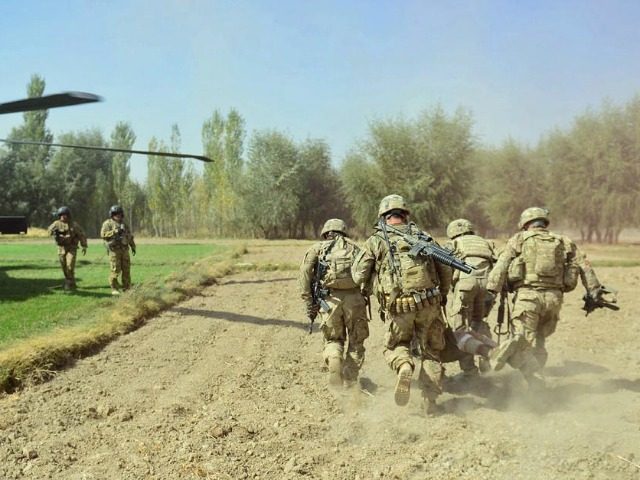WASHINGTON – Defense Secretary James Mattis confirmed Wednesday that President Trump has directed him to set U.S. troop levels in Afghanistan, undoing restrictions placed by former President Obama.
“Yesterday afternoon, the President directed the Department of Defense to set troop levels in Afghanistan. This will enable our military to have greater agility to conduct operations, recognizing our military posture there is part of a broader regional context,” Mattis said in a statement.
Mattis said the decision “is part of a broader strategy” being developed to address the U.S.’s role in Afghanistan “and beyond” that will be presented in coming weeks. He told lawmakers this week that the strategy would be ready by around mid-July.
Trump’s move leaves it up to Mattis, a former four-star Marine general and U.S. Central Command commander who has commanded in Iraq and Afghanistan, to set the troop levels instead of seeking White House permission as was the case under Obama.
Obama had ordered a troop drawdown beginning in 2011 that would see only a small troop presence at the U.S. Embassy in Afghanistan by the time he left office in 2017. However, a Taliban resurgence had caused him to slow the drawdown and leave 8,400 U.S. troops in the country.
On Wednesday, Mattis told senators at a hearing on Wednesday that Obama’s decision to begin drawing down forces allowed for the Taliban to become emboldened.
Mattis clarified in his statement that having the authority to set the level of U.S. troops did not mean a change in the current level. But, he said, it would ensure that the Pentagon can “facilitate our missions and align our commitment to the rapidly evolving security situation, giving our troops greater latitude to provide air power and other vital support.”
He assured that the Pentagon’s “core mission” would remain the same – to train, advise, and assist Afghan forces, instead of taking the lead in combat.
He also said the U.S. would continue to work with allies in Afghanistan and “we will ask more of them.” Increase in U.S. troops levels in the past have also been accompanied by an increase in NATO partners’ force levels there.
Mattis reportedly supports a plan backed by the current U.S. commander in Afghanistan, Army Gen. John Nicholson, and National Security Adviser Army Lt. Gen. H.R. McMaster, to raise U.S. troop levels to between 3,000 to 5,000, to hit the Taliban harder and force them to come back to the negotiating table.
Others in the White House favor a plan that would leave U.S. troop levels at its current level of 8,400 but focus less on fighting the Taliban and nation building and more on training Afghan forces on foreign internal defense – or securing the country from outside invaders and terrorists.
Mattis reminded the American public of the need for U.S. troops in Afghanistan, from where al-Qaeda planned the September 11, 2001, attacks on the World Trade Center and the Pentagon that killed 2,996 people and injured more than 6,000.
He said:
Thanks to the vigilance and skill of the U.S. military and our many allies and partners, horrors on the scale of Sept. 11, 2001, have not been repeated on our shores. However, the danger continues to evolve and that danger requires a commitment to defeat terrorist organizations that threaten the United States, other nations, and the people of Afghanistan.
He also noted that the Islamic State in Iraq and Syria (ISIS) has established a branch in Afghanistan, known as ISIS-Khorasan, and that al-Qaeda and other terrorist groups remain active inside Afghanistan.
He said the Taliban, who allowed al-Qaeda to establish a presence inside Afghanistan, continues to pose a challenge to the democratically elected government.
“This administration will not repeat the mistakes of the past. We cannot allow Afghanistan to once again become a launching point for attacks on our homeland or on our allies,” he said.
He added, “We are making progress in degrading these groups, but their defeat will come about only by giving our men and women on the ground the support and the authorities they need to win.”
The U.S. first invaded Afghanistan in October 2001, and an estimated 2,300 American servicemembers have lost their lives in the military campaign.

COMMENTS
Please let us know if you're having issues with commenting.